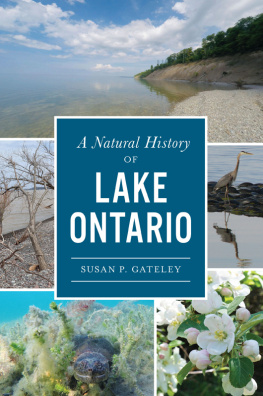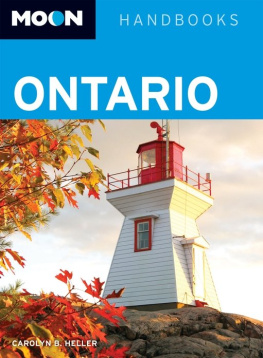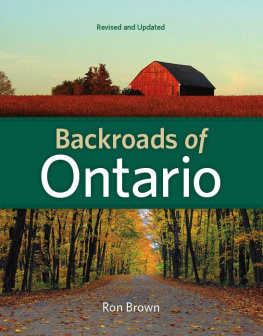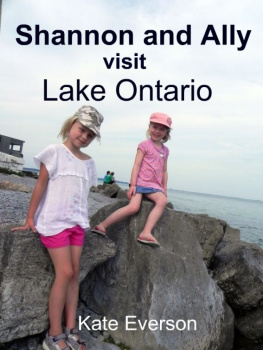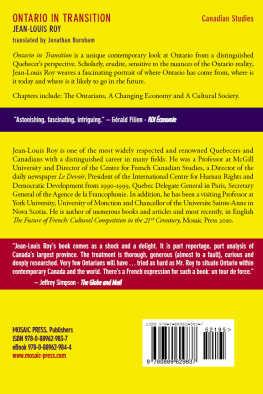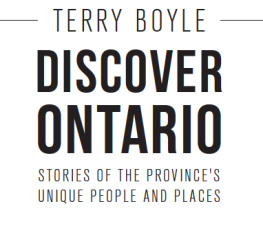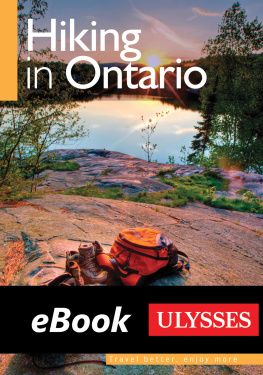ABORIGINAL ONTARIO
ABORIGINAL ONTARIO
HISTORICAL PERSPECTIVES ON THE FIRST NATIONS
edited by
Edward S. Rogers and Donald B. Smith

Her Majesty the Queen in right of the Province of Ontario 1994
This book has been published with the assistance of funds provided by the Government of Ontario through the Ministry of Culture, Tourism and Recreation.
All rights reserved. No part of this publication may be reproduced, stored in a retrieval system, or transmitted in any form or by any means, electronic, mechanical, photocopying, recording, or otherwise (except brief passages for purposes of review) without the prior permission of Dundurn Press Limited. Permission to photocopy should be requested from the Canadian Reprography Collective.
The publisher wishes to acknowledge the generous assistance and ongoing support of the Canada Council, the Book Publishing Industry Development Program of the Department of Canadian Heritage, the Ontario Arts Council, and the Ontario Publishing Centre of the Ministry of Culture, Tourism and Recreation.
Care has been taken to trace the ownership of copyright material used in the text (including the illustrations). The editors and publisher welcome any information enabling them to rectify any reference or credit in subsequent editions.
J. Kirk Howard, Publisher
Printed and bound in Canada
Canadian Cataloguing in Publication Data
Main entry under title:
Aboriginal Ontario : historical perspectives on the First Nations
(Ontario historical studies series)
Includes bibliographical references and index.
ISBN 155002-2091 (bound)
ISBN 155002-230-X (pbk.)
1. Native peoples Ontario History.* I. Rogers, Edward S. II. Smith, Donald B., 1946 III. Series.
E78.05A26 1994 | 971.300497 | C94930936-2 |
Dundurn Press Limited
2181 Queen Street East
Suite 301
Toronto, Canada
M4E 1E5
Dundurn Distribution
73 Lime Walk
Headington, Oxford
England
0X3 7AD
Dundurn Press Limited
1823 Maryland Avenue
P.O. Box 1000
Niagara Falls, N.Y.
U.S.A. 143021000
Dedicated to Cam Currie,
who died 14 March 1981, with only nine months to retirement
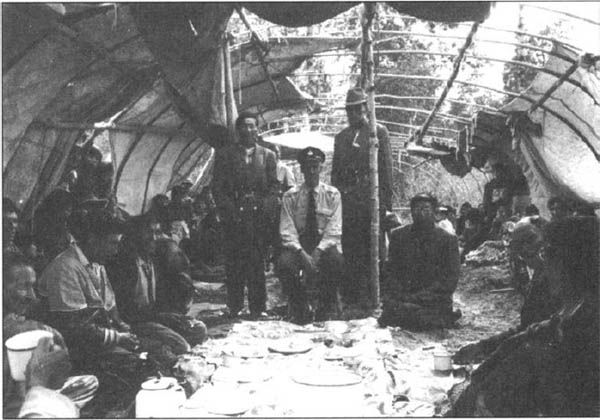
Campbell Cam Currie was a fur trader for the Hudsons Bay Company at Big Beaverhouse Post in northwestern Ontario before he joined the Ontario Department of Lands and Forests now the Ministry of Natural Resources in the 1950s. Here Cam is shown seated, holding the mide pipe. Standing in the back to the right is Thomas Fidler, chief of the Sandy Lake band. On either side of Cam are the two councillors. This photo was taken by Ed Rogers inside the mide lodge at Sandy Lake, 15 July 1958.
Contents
GOLDWIN FRENCH, PETER OLIVER, JEANNE BECK, AND J.M.S. CARELESS
BASIL JOHNSTON
DONALD B. SMITH
EDWARD S. ROGERS AND DONALD B. SMITH
WILLIAM G. DEAN
JAMES V. WRIGHT
BRUCE G. TRIGGER
BRUCE G. TRIGGER AND GORDON M. DAY
ELISABETH TOOKER
ROBERT J. SURTEES
EDWARD S. ROGERS
CHARLES M. JOHNSTON
SALLY M. WEAVER
SALLY M. WEAVER
CHARLES HAMORI-TOROK
CHARLES A. BISHOP
CHARLES A. BISHOP
EDWARD S. ROGERS
J. GARTH TAYLOR
HARVEY MCCUE
DONALD B. SMITH
Maps
Tables
The Ontario Historical Studies Series
For many years English Canadian historical writing has emphasized the emergence and the consolidation of the Canadian nation. This theme has been developed in uneasy awareness of the persistence and importance of regional interests and identities, but because of the central role of Ontario in the growth of Canada, Ontario has not been seen as a region. Almost unconsciously, historians have equated the provinces history with that of the nation and have often depicted the interests of other regions as obstacles to Canadas unity and welfare.
The creation of the province of Ontario in 1867 was the visible embodiment of a formidable reality, the existence at the core of the new nation of a powerful if disjointed society whose traditions and characteristics differed in many respects from those of the other British North American colonies. The intervening century has not witnessed the assimilation of Ontario to the other regions in Canada; on the contrary, it has become a more clearly articulated entity. Within the formal geographical and institutional framework defined so assiduously by Ontarios political leaders, an increasingly intricate web of economic and social interests has been woven and shaped by the dynamic interplay between Toronto and its hinterland. The tension between a rapid adaptation to the processes of modernization and industrialization in modern Western society and a reluctance to modify or discard traditional attitudes and values has formed the character of this regional community. Not surprisingly, the Ontario outlook has been, and in some measure still is, a compound of aggressiveness, conservatism, and the conviction that its values should serve as the model for the rest of Canada.
From the outset, the objective of the Series Board of Trustees was to describe and analyse the historical development of Ontario as a distinct region within Canada. The Series includes biographies of several premiers and thematic studies on the growth of the provincial economy, educational institutions, labour, welfare, the Franco-Ontarians, the Native peoples, and the arts.
Professor Edward S. Rogers initiated Aboriginal Ontario. Following Dr. Rogerss untimely death in 1988, Professor Donald Smith generously agreed to become co-editor and to collaborate with the Series editors in preparing the manuscript for publication. The contributors cooperated fully with Dr. Smith in completing this task.
From the outset, Dr. Rogers and his colleagues sought to prepare a series of essays on the histories of the Native peoples or First Nations in the area now defined as Ontario. Thus, they avoided structural and static descriptions of the Native societies. They worked instead to describe the development of the several First Nations in the context of their own rich history and the impact of their ongoing encounters with European culture. They have shown that, despite unrelenting pressure to become assimilated, the Native peoples have preserved their sense of social and cultural identity.
Aboriginal Ontario is a sympathetic and scholarly account, based on the large and steadily growing body of sources. It recognizes the complexity and variety of the historical experience of the First Nations in Ontario. We hope that it will be useful to Native and non-Native scholars and students, and that it will stimulate new research and writing on past and contemporary Native issues in this province.
The editors and the Board of Trustees are very grateful to the late Professor Rogers, to Professor Smith, and to their contributors for undertaking this task. We wish to thank Dr. Mary Black Rogers most warmly for her thoughtful assistance in completing this work. We hope that this volume will be a worthy memorial to Edward Rogers, a distinguished scholar, whose understanding of and respect for the Native peoples was recognized generously by them. Edward Rogers is buried at Weagamow (Round) Lake, Ontario, in the cemetery of the North Caribou Lake people with whom he worked from 1958 until his death. In honour of their friendship with this remarkable individual they welcomed his burial amongst them.
Next page

